Small, midsize stations make progress with major-donor fundraising

WXXI
To celebrate the 50th anniversary of its founding, WXXI hosted a breakfast for donors last year.
The residents of Naples, a sleepy southwest Florida beach town, tend to be elderly and well-off. They fit the profile of the type of major donors that local nonprofits like WGCU Public Media are prospecting for.
Economic and demographic figures outline the potential for charitable giving in the market: The average income of the top 1 percent in the Naples-Immokalee-Marco Island area, located just above the Everglades, is nearly $4.2 million, according to an analysis from the Economic Policy Institute. Of Naples’s roughly 20,000 residents, the U.S. Census Bureau reports that nearly half are age 65 and older.
“We are called ‘God’s waiting room,’” said Kimberly Dye, director of development and corporate support with WGCU in nearby Fort Myers, Fla. The Florida Gulf Coast University–owned station provides both PBS and NPR programming to the region.
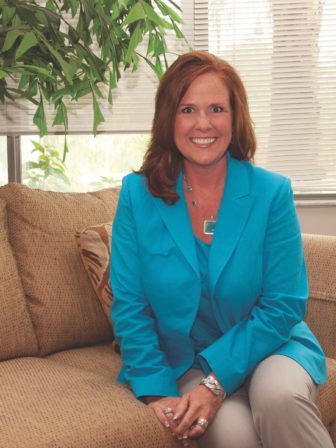
Dye
When WGCU ran a WealthEngine screening of about 1,500 donors with the capacity to participate in its Leadership Circle, focusing on those who give $1,200 and above, it found that hundreds were contributing as little as $60 a year. Yet many had the ability to give six-figure gifts. “People don’t give what you don’t ask for,” Dye said.
Experts from Greater Public and other organizations recommend stations of all sizes invest in major giving programs now, even if in a small way. Relationships cultivated through these efforts can pay off later. But tapping into that pool of high-value donors requires shifting attitudes and approaches to fundraising, which is no small feat in a field that’s accustomed to asking for basic membership gifts of less than $50.
Public radio in particular has lagged behind television in building major giving programs, according to public media leaders and consultants. Small and midsize stations like WGCU often have smaller fundraising staffs and fewer resources, so their development staff must be especially creative in developing ways to engage and grow their pools of major donors.

Turner
Major giving “doesn’t yet rival membership as a percentage of the station budget, but it is the fastest-growing revenue area in public media,” said Deborah Turner, formerly Greater Public’s advisor for major and planned giving, and now development VP at New Hampshire Public Radio.
Between fiscal 2014 and 2016, major gift donations of at least $10,000 annually increased for small to midsize stations, according to Greater Public’s Benchmarks for Public Radio Fundraising. (The sample of participants included 54 diary-measured stations for FY14, 52 for FY15 and 53 for FY16.)
Among those stations, the median gift amount grew by 20 percent, from $17,500 in FY14 to $21,000 in FY16. Average gifts increased 22 percent, from $36,000 in FY14 to $44,000 in FY16, with a peak of $54,000 in FY15.
About 100 stations of various sizes participate in the annual benchmarks study, and their audiences represent about half of public radio listening, said Jay Clayton, Greater Public individual giving advisor. For several years, traditional fundraising programs like membership and underwriting have consistently generated about 5 or 6 cents per listener-hour among stations whose audiences are measured by Nielsen’s Portable People Meters. But revenue per listener-hour for these stations’ major gift fundraising is about half of that. “I think it’s a reflection of the program being newer and [having] not yet reached its potential,” Clayton said.
Among the small to midsize diary-measured stations, major giving net revenue per listener-hour decreased from 1.3 cents in fiscal 2015 to 1.1 cents in FY16. Clayton attributed at least part of the decline to audience growth for these stations. Their annual listener-hours grew from 1.51 billion in FY15 to 1.56 billion in FY16 over the same time period, Clayton said. Revenues from membership/mid-level giving ($1–$999) also decreased for these stations, from 3.3 cents per listener-hour to 2.9 cents. But underwriting revenue grew from 2.9 cents per listener-hour to 3 cents.
Based on fundraising performance for these programs, Clayton believes that stations can expect to earn the same amount per listener-hour — net revenue of roughly 3 cents — in “major giving revenue when these programs fully mature,” he wrote in an email.
Both major and planned gift fundraising should be high on a station’s list of strategic priorities, according to fundraising experts. “This is the way they’re going to really help fund their future, and getting started now, making the investment now, is going to pay off in big ways down the road,” Turner said. “But it’s not something that can be put off until next year.”
Change begins at the top
Building a successful program requires investment from top leadership, such as the CEO or GM, who should be comfortable interacting with donors and other key constituencies as the face of the organization. They should be visible in the community and socialize with top donors, according to experts.
For example, Jay Pearce, CEO of WVIK, an NPR news and classical station in Rock Island, Ill., speaks at community events and meets individually with high-level donors, a common expectation for station executives. But he also socializes with them in situations that don’t involve an ask for the station — such as galas for other nonprofits and local concerts. “That has been responsible for moving a number of these folks from the $500 [giving level] to $1,000 and up,” Pearce said.
It also helps that these supporters hear Pearce on the air. With nine full-time staffers, Pearce hosts Morning Edition on top of his executive leadership responsibilities.
The director of development, Jennifer von Kaenel, lays much of the groundwork for Pearce, identifying prospective major donors and setting up appointments. “But at the end of the day sometimes, CEOs want to talk to CEOs,” said Pearce, who added CEO to his title in 2013.
“And that’s OK. I don’t take it personally,” von Kaenel said.
Beyond Pearce, WVIK encourages its full-time staffers to volunteer, join community organizations and sit on nonprofit boards. Station leaders and consultants suggest that everyone, regardless of rank or department, consider themselves station ambassadors. Hence, everyone’s a fundraiser.
“No matter how sophisticated your operation is, the number one thing is honest, sincere, two-way relationships between the station representatives and the donors -— and in some ways that comes down to one person,” said Eric Greiling, executive director of Friends of Wisconsin Public Television. “Whoever’s talking with the donor, they’re representing the station at that moment in time. They’re building that relationship at that moment in time. They’re the ambassador for the station.”
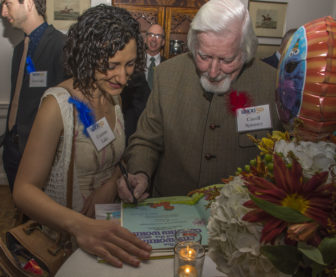
Sesame Street puppeteer Caroll Spinney, right, autographs a book at a WXXI event. (Photo: WXXI)
Changing the culture of public media fundraising also requires changing the mindset among staffers and stakeholders in the community. For example, a museum might draw up to 40,000 visitors in a year, but a station can reach that many people in a single day, Pearce said. With that kind of reach, public radio shouldn’t be afraid to signal that it is as important as other community organizations, Pearce said, but stations shouldn’t try to elevate themselves over others either.
WVIK partners with the major local cultural institutions -— certain museums, the symphony, a botanical center, and a music teaching and performance venue -— and wants the top philanthropists in town to know it. Those organizations are considered essential to the well being of the community, and WVIK wants to benefit from a “halo effect,” Pearce said.
At WVIK, a major gift is considered anything above $1,000. The half-dozen stations interviewed for this story maintain similar standards. However, nonprofits outside of public media, like universities, typically have higher thresholds.
“We still suffer from a little bit of self-esteem issues, but we’re getting there,” Pearce said. “We considered $500 a major gift five years ago. Gradually we changed the mindset that it should be at least $1,000. It really should be more than that.”
Engaging major donors
With a development staff of four, WGVU Public Media, a joint licensee at Grand Valley State University in western Michigan, began its major giving program six years ago by leveraging opportunities that were already in place. The station also adapted ideas from major-market stations, such as bringing donors to the PBS Annual Meeting, said Tim Eernisse, director of development.
First, Eernisse said, key WGVU staff began calling donors regularly to touch base. It later invited them to quarterly lunches with the general manager, Michael Walenta. Donors who participate in a travel program are treated like major donors for 12 months, receiving special invitations and personal calls. Since the station works with numerous community arts organizations, that provide exclusive tickets to events, Walenta and his wife invite major donors to join them.
They’ve found that major donors enjoy behind-the-scenes opportunities, like sitting in on the production control room and learning about the station’s plans before they’re made public. The station invites major donors to Fall Preview, an event that showcases upcoming PBS programs and features a nationally recognized host or system leader. Lesli Rotenberg, PBS GM of children’s media, visited WGVU in 2015. A donor who met Rotenberg at the preview event later went to lunch with Eernisse. Later, the donor provided funding for a three-year education position that had been discussed at the event, Eernisse said.
In another example of engaging donors in work that is already being done, WGVU adapts its fiscal year-end reports into material that can be shared with major donors and prospects. The station adds a small paper insert thanking the donor for their support but doesn’t ask for a donation. Some donors still respond with checks.
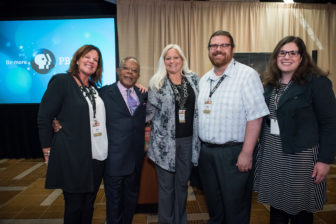
WGVU donors pose with Henry Louis Gates Jr. during “PBS Insider Experience,” a donor track at the 2016 PBS Annual Meeting in Chicago.
WGVU also took advantage of the special donor track that PBS offers at its annual meeting, inviting 11 of its top contributors to participate in “PBS Insider Experience” during last year’s meeting in Chicago. They heard Frontline’s Raney Aronson speak, attended a reception with keynote speaker Norman Lear and mingled with PBS President Paula Kerger. Although the donors paid their own costs to attend, including registration, travel and accommodations, WGVU covered their meals and organized an architecture river tour as a special event.
“We tell them this is an opportunity that we believe would be a benefit for them to see what we’re doing, because they are our leadership,” Eernisse said. “They are the ones who help us get to another level at the station.”
The average annual cost to WGVU per couple has been around $2,400, according to Eernisse. So far this year, donors who went to Chicago increased their giving by $9,490. In addition, they brought new donors to WGVU who have contributed $3,750.
The donors came back from Chicago energized with ideas, Eernisse said. “Sometimes too many ideas.”
Start by asking for advice
Whenever Dye is trying to nurture a prospective major donor for WGCU in Fort Myers, she looks for something that donor can do to help. “The biggest thing for fundraisers: When you ask for money, you get advice; when you ask for advice, you get money,” Dye said during a panel at last year’s Public Media Development and Marketing Conference.
For example, the station has consulted with a longtime CBS News correspondent and asked him to moderate an event, work that he’s used to doing. “I guarantee he will be at least a six-figure donor of mine in the next year or two,” Dye said.
She emphasizes the importance of patience in cultivating prospective donors. “You have to build relationships,” Dye said. “You have to really get to know what people want. I think too often in public media we throw this huge net out and say, ‘Give us money. Give us money. Give us money,’ and it’s all about us.” TV pledge pitches echo lines like, “We need your help,” without asking the donors what they want or would like to leave behind, Dye said.
WGCU’s patient approach to developing its major gifts initiatives, which started with establishing gift policies and building personal relationships with donors over time, paid off last year. The Fort Myers station waited four years to ask its largest benefactor for a gift. When Dye and her colleagues found the right fit, they finally secured $3 million for TV arts programming — WGCU’s first seven-figure gift. Dye first approached the donor by asking for advice and listening to her needs.
A focus on planned giving resulted in another seven-figure gift left by “someone who hasn’t given us a penny.” Dye didn’t disclose the amount.
Don’t forget the basics
Deb Oyler, executive director of High Plains Public Radio, a cross-border station with broadcast and production studios in Garden City, Kan., and Amarillo, Texas, thanks donors for their gifts by sending handwritten notes on thank-you cards. Any gift that’s over $1,000 receives an additional thank-you card from a board member. She takes heed of donors’ preferences for communicating.
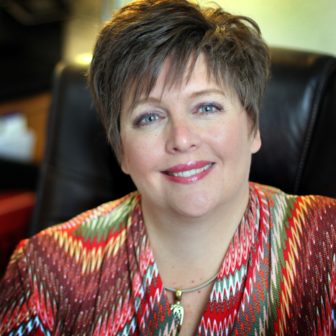
Oyler
Older donors enjoy home visits, but those in the below-40 crowd like different meet-ups, she said. “We drink a lot more coffee. Or wine.”
“I would never, ever consider sending an email to some of my major donors, whereas others, that’s the only way they’ll communicate,” Oyler said. “But they all appreciate a handwritten thank-you note.”
Personal touches are important for major donors, but so is making sure everyone is included and has a “wonderful experience” with the station, said Laura Garrison, VP of development with WXXI in Rochester, N.Y.
WXXI hosts weekly events for donors, and is mindful to treat everyone with the same courtesy, no matter their giving levels. When a donor who had given a small amount requested a DVD, there was some internal debate whether to provide it as a gift, Garrison said. But the fundraising team decided to do it. The woman sent back a $500 check.
“The whole thing is making sure that you’re really nice to people,” Garrison said. “You’re listening to them. You’re making sure you understand what they want and have sympathy and a sense of humor.”
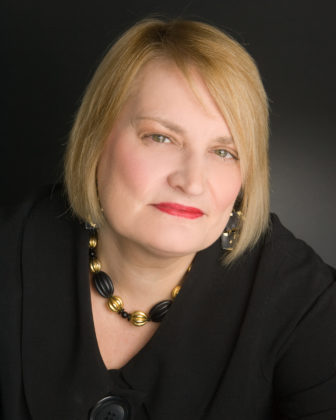
Garrison
While major donors should receive more personalized communication, it’s also important to be inclusive and make sure “everybody’s invited to the party,” Garrison said.
“You want that big base, that big wide base of support, so if you have a fundraising crisis, you can call out the troops,” Garrison said.
WXXI is finding that some of its largest planned gifts are coming from people who were not major donors. “But I think that’s very typical of the generation that’s unfortunately passing on now,” Garrison said. “They were big savers. They wanted to make sure they had the money to last them through their lives, but they’re still being generous as they pass on. And not just to us, but to many other organizations.”


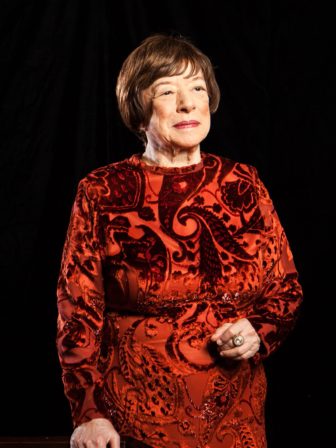



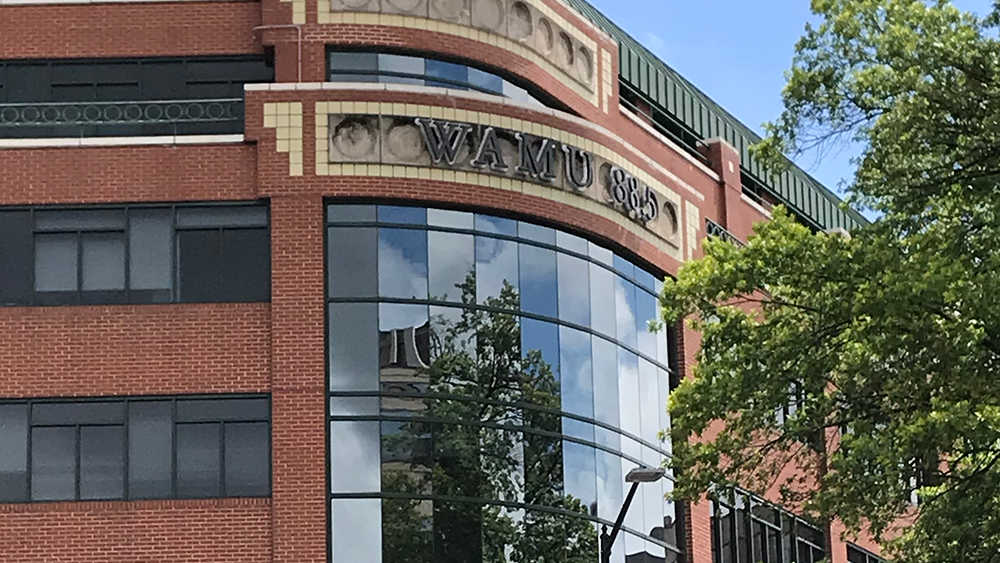

Great for public media!!!